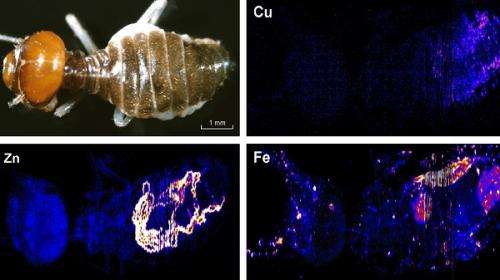Hidden ants reveal gold better than top-dwelling termites

Subterranean ants and termites are leading researchers and prospectors alike, to gold and other minerals in the northern Yilgarn district.
"There's been anecdotal evidence of it in the Kalgoorlie area since the 1920s," entomologist Aaron Stewart says.
Following an earlier study of a termite that builds nests mostly above ground (Tumulitermes tumuli), they have extended their research to a subterranean termite species (Schedorhinotermes actuosus) and an ant (Rhtidoponera mayri).
"Termite mounds, subterranean termites and ants have the ability to vertically transport indicators [like gold] from 1.4m depth," their paper says.
"The ant species studied brings larger concentrations of gold to the surface than the termites studied."
With regolith geochemist Ravi Anand, Dr Stewart has been analysing soils brought up by species that do not build large above-ground nests.
"Their nests are large but below ground," he says.
"These subterranean termites are present all over southern Australia where we don't have large mound-forming termites."
He says it is important to have good background knowledge of the area to be explored.
They have been working with an exploration company that already had a detailed knowledge of the area's paleochannels and other geological features.
"With that background knowledge we are able to see what the values within the termite nests mean in terms of the specifics of what's beneath them," he says.
They took samples of nests along a transect line across the area of known mineralisation, but which was long enough to include 'background samples' from areas where mineralisation is known not to be active.
"Those samples allow us to directly compare to the kind of numbers we are getting from the nests which are found over where the mineralisation is," he says.
He says their knowledge of how the insects collect valuable minerals is now very good for low-rainfall, summer dominated country with lots of paleochannels, and the method can be put to immediate use by prospectors and explorers.
"What we have here is a technique that can reduce the costs in exploration in a time when exploration is expensive and difficult," he says.
"But also open up new areas that we otherwise wouldn't."
They would now like to partner with companies working elsewhere.
"There are other areas like the real monsoon north and the south of Western Australia where we don't have the same conditions," he says.
"We really need to study the termites under those conditions to see how they're acting."
More information: Aaron D. Stewart, Ravi R. Anand, "Anomalies in insect nest structures at the Garden Well gold deposit: Investigation of mound-forming termites, subterranean termites and ants," Journal of Geochemical Exploration, Available online 24 February 2014, ISSN 0375-6742, dx.doi.org/10.1016/j.gexplo.2014.02.011.
Provided by Science Network WA

















